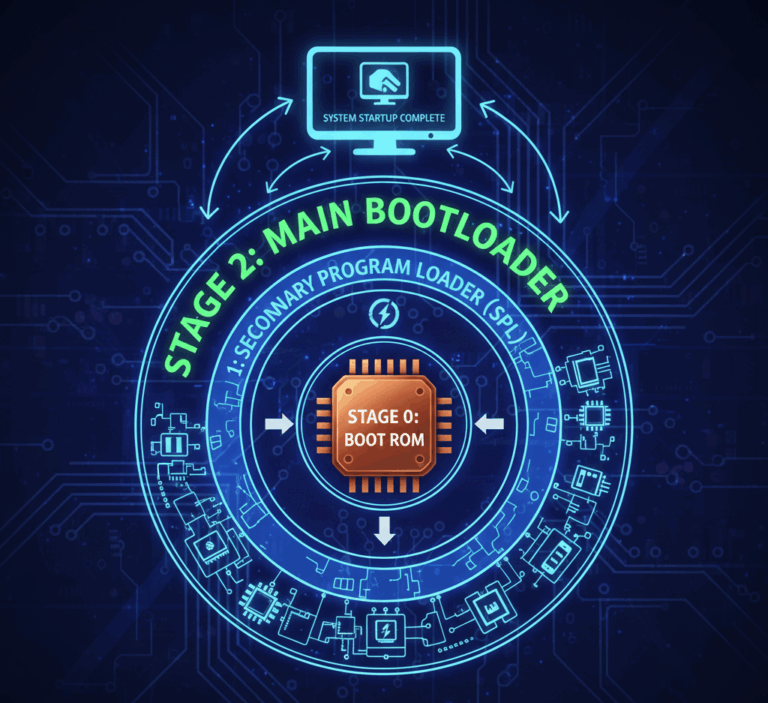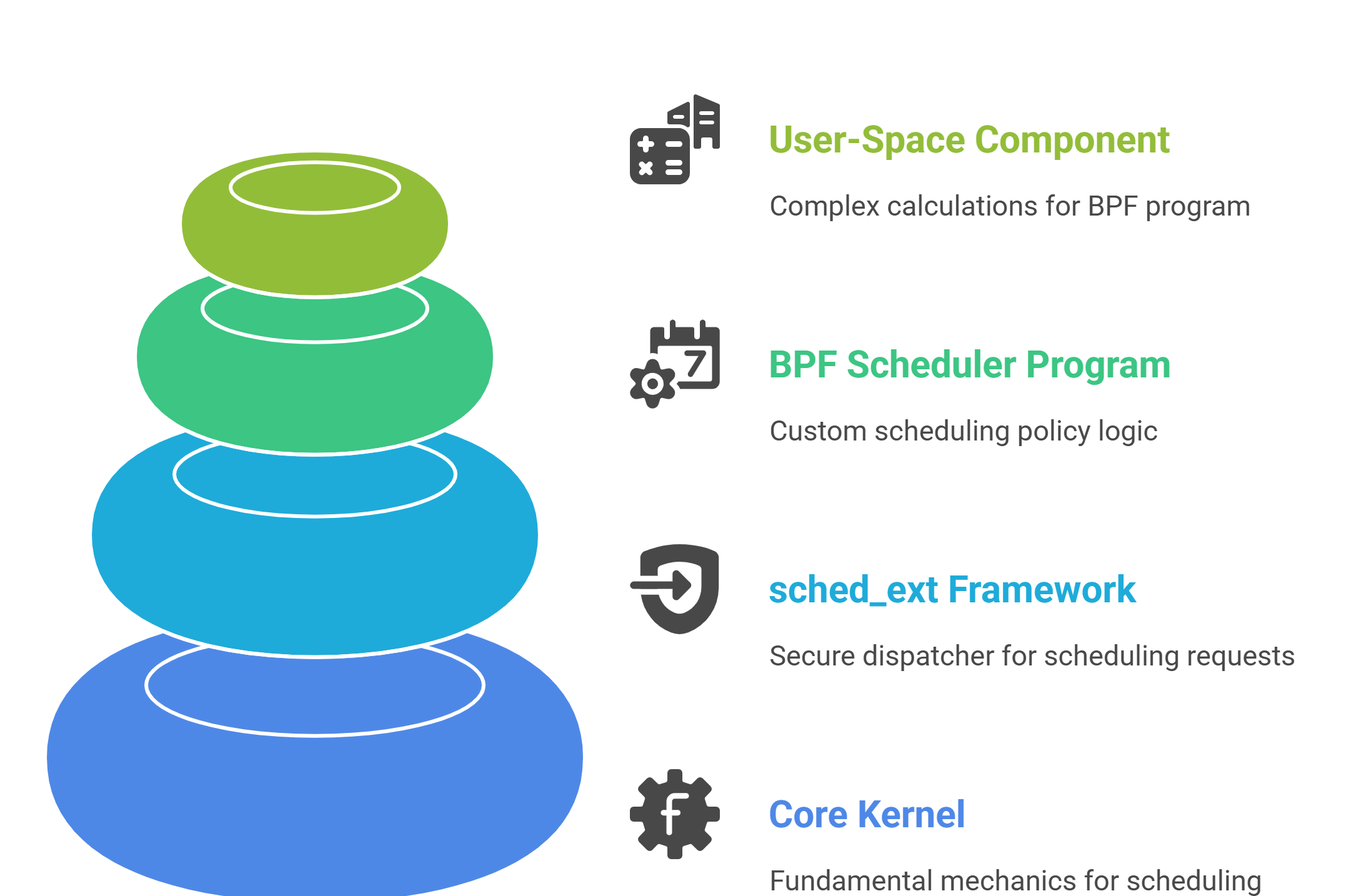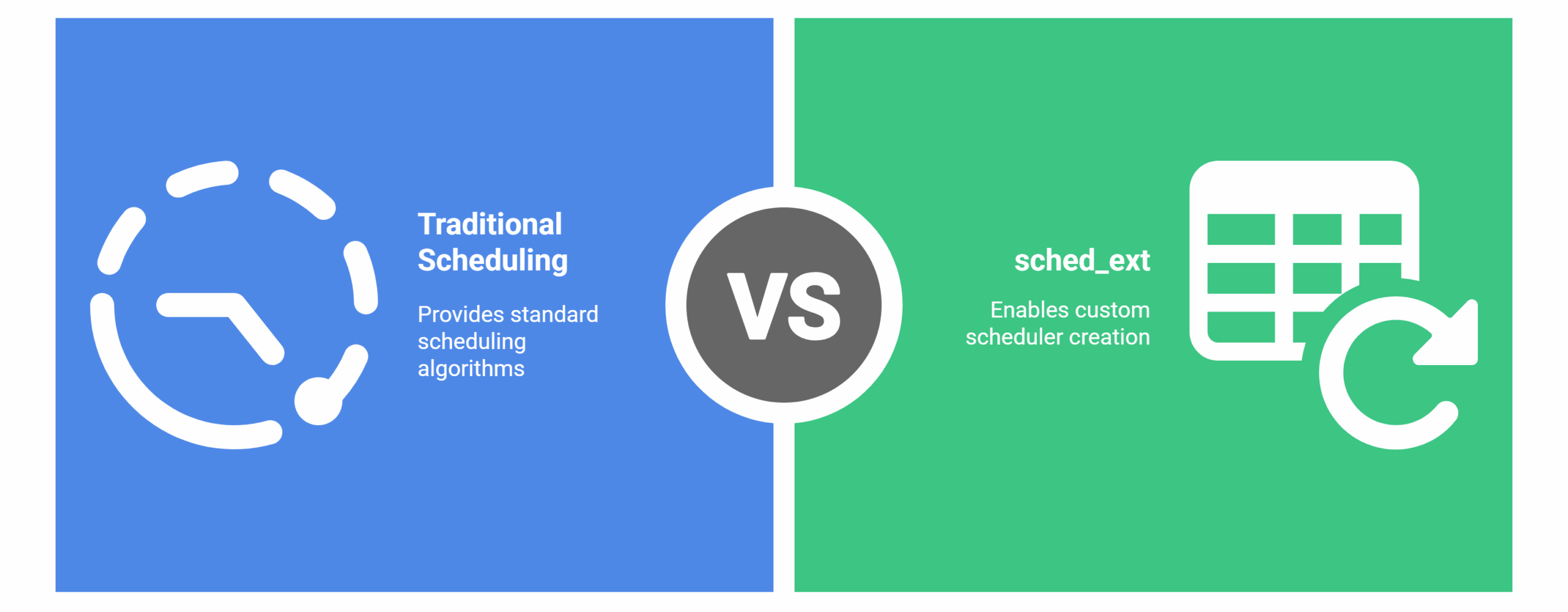
Meet the sched_ext Ecosystem
This article provides a deep dive into the major scheduler classes, their unique design goals, and the management utilities powering the system.
While the PC and server world has evolved towards the simplicity of Unified Kernel Images, the embedded systems domain—dominated by ARM and RISC-V architectures—operates under a completely different set of rules. Here, the boot process is dictated by resource constraints, non-discoverable hardware, and a relentless focus on cost optimization.
The boot process on a typical System-on-Chip (SoC) is a multi-stage climb, with each loader establishing a more capable environment for the next. This is a direct consequence of the hardware’s initial memory limitations.

While U-Boot and Barebox serve the same function, they represent different design philosophies.
Unlike the PC world with its self-enumerating buses like PCI, the hardware peripherals on an SoC (UARTs, I2C controllers, etc.) are at fixed memory addresses and cannot be discovered by the kernel at runtime.
The Device Tree is the solution. It is a data structure, written in a human-readable text file (.dts), that explicitly describes all the hardware on a specific board: what peripherals exist, their memory addresses, their interrupt connections, and other properties. This file is compiled into a compact Device Tree Blob (.dtb). The bootloader loads this .dtb into memory alongside the kernel and passes a pointer to it. The kernel then parses this data to learn what hardware it is running on, allowing a single, generic kernel binary to support a wide variety of boards.
From the resource-constrained world of embedded devices, we next turn to even more specialized platforms. In Part 4, we will examine the highly controlled boot flows of Android, IBM Z mainframes, and QEMU/KVM virtual machines.

This article provides a deep dive into the major scheduler classes, their unique design goals, and the management utilities powering the system.

sched_ext is not a scheduler; it’s a framework that securely connects custom BPF programs to the core kernel. Its architecture consists of four distinct layers that separate responsibilities cleanly.

For decades, general-purpose schedulers like CFS and EEVDF, powered everything from phones to supercomputers. But with complex hardware and specialized software, the “one-size-fits-all” scheduling model began to crack. This tension set the stage for sched_ext.

In this final installment of our series, we synthesize our exploration of diverse Linux boot processes by examining two critical, cross-platform themes: securing the chain of trust and ensuring system resiliency through atomic updates